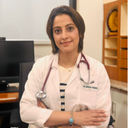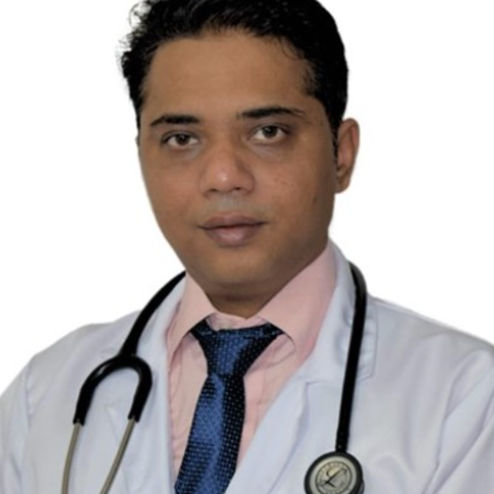Tuberculosis: Causes, Symptoms, Types, and Treatment Options
Learn about tuberculosis (TB), its causes, symptoms, types, and treatment options. Find out how TB spreads, ways to prevent it, and why early diagnosis is crucial.

Written by
Last updated on 3rd Jul, 2025
Introduction
Almost everyone has heard about tuberculosis (TB). Some think that it is a disease of the past now. However, TB is still a global health issue that affects millions of people every year. If left untreated, it can damage your lungs and even spread to other parts of your body.
TB is a bacterial infection caused by Mycobacterium tuberculosis. While it mainly affects your lungs, it can also spread to other organs like your brain, bones, or kidneys. If you have latent TB, the bacteria remain in your body but don’t cause symptoms. But if it becomes active, you may experience severe symptoms.
TB has been around for centuries. In the 19th and early 20th centuries, it was called "consumption" and was one of the deadliest diseases in the world. Before antibiotics, TB was treated in sanatoriums, where patients were isolated, given fresh air, and forced to rest. In the 1940s, the discovery of streptomycin changed everything and made TB treatable.
Understanding Tuberculosis
Tuberculosis is a contagious disease that can spread silently. You might not even know you have it until symptoms appear. That’s why understanding how TB develops and spreads is so important.
1. Definition and Causes of TB
TB is caused by Mycobacterium tuberculosis, a bacteria that primarily affects your lungs but can also infect your bones, brain, and kidneys. If you have latent TB, the bacteria stay in your body without making you sick. But if your immune system weakens, the infection can turn active and cause symptoms.
Certain factors can increase your risk, including:
Weakened immunity (HIV, diabetes, cancer treatment)
Malnutrition
Living in crowded or unsanitary conditions
2. Transmission of TB
TB spreads when an infected person coughs, sneezes, or speaks, releasing bacteria into the air. If you inhale these bacteria, you can get infected. But here’s the catch—latent TB isn’t contagious, only active TB is.
You’re at higher risk if:
You live with someone who has active TB.
You work in healthcare or high-risk settings.
You travel to areas where TB is common.
Types of Tuberculosis
Some people carry the bacteria without symptoms, while others develop severe lung infections. In some cases, TB even spreads beyond the lungs. The type of TB you have determines whether you’re contagious and what kind of treatment you’ll need.
1. Latent vs. Active TB
If you have latent TB, the bacteria live in your body without causing symptoms. But if they become active, you can develop serious health problems and spread the infection to others.
Latent TB – You have the bacteria, but they are inactive. You won’t feel sick, and you can’t infect anyone. However, if your immune system weakens, latent TB can turn into active TB over time.
Active TB – The bacteria multiply, causing a chronic cough, fever, night sweats, and weight loss. If you have active TB, you can spread it to others through coughing or sneezing.
2. Pulmonary vs. Extrapulmonary TB
While pulmonary TB is the most common form, extrapulmonary TB can spread to other organs. The symptoms depend on which part of your body is infected.
Pulmonary TB – This type affects your lungs. You may experience severe coughing, chest pain, difficulty breathing, and coughing up blood. Since pulmonary TB is highly contagious, it’s important to start treatment immediately.
Extrapulmonary TB – Sometimes, TB spreads beyond the lungs to your kidneys, spine, brain, or lymph nodes. This type isn’t contagious, but it can cause serious complications, like kidney failure, spinal damage, or meningitis.
If you suspect any form of TB, early diagnosis and treatment are the best ways to prevent complications.
Risk Factors and Vulnerable Populations
Tuberculosis doesn’t affect everyone equally. If your immune system is weak or you live in certain conditions, your risk of TB is much higher. Knowing these risk factors can help you take precautions and seek early treatment if needed.
1. Common Risk Factors
Certain health conditions and lifestyle factors can make you more vulnerable to TB. If you fall into any of these categories, you should be extra cautious:
Weakened immune system – If you have HIV, diabetes, or cancer, your body struggles to fight TB bacteria.
Malnutrition – Lack of essential nutrients weakens your defense against infections.
Smoking and substance abuse – These damage your lungs, increasing the risk of TB.
Close contact with infected individuals – If someone in your home has active TB, you’re at higher risk.
Taking care of your health and avoiding exposure can lower your chances of getting TB.
2. Populations at Higher Risk
Certain groups of people are more vulnerable to TB due to their living conditions, work environments, or overall health status. If you belong to any of these groups, regular screening is important:
Infants and young children – Their immune systems aren’t fully developed, making it harder to fight infections.
Elderly individuals – As you age, your immune system weakens, making TB more dangerous.
Healthcare workers – If you work in hospitals or clinics, you’re more likely to be exposed to TB patients.
People in crowded living conditions – Those in prisons, refugee camps, or shelters are at higher risk due to close contact and poor ventilation.
If you fall into a high-risk category, getting vaccinated and seeking early medical advice can help prevent TB complications.
Symptoms of Tuberculosis
TB symptoms don’t always show up immediately. In some cases, you might have latent TB without feeling sick at all. But when TB becomes active, it starts affecting your lungs or other parts of your body. The symptoms you experience depend on where the infection spreads.
1. Symptoms of Pulmonary TB
Pulmonary TB, which affects your lungs, is the most common form. If you have it, you may notice:
Persistent cough – Lasting more than three weeks, sometimes with blood.
Chest pain – Especially when breathing or coughing.
Shortness of breath – As the infection progresses, it gets harder to breathe.
Fever and night sweats – You may wake up drenched in sweat.
Unexplained weight loss and fatigue – TB can make you feel weak and lose appetite.
If you have these symptoms, getting tested early can prevent complications.
2. Symptoms of Extrapulmonary TB
Sometimes, TB spreads beyond the lungs to other organs. If you have extrapulmonary TB, your symptoms will depend on which part of your body is infected:
Spinal TB – Causes severe back pain and, in some cases, paralysis.
Kidney TB – Leads to blood in urine and abdominal pain.
Brain TB (Meningitis) – Can cause severe headaches, confusion, and seizures.
Lymph node TB – Results in swollen lymph nodes, especially in the neck.
Diagnosis of Tuberculosis
If you have a persistent cough, fever, or unexplained weight loss, your doctor may suspect TB. Early diagnosis is important because untreated TB can spread and cause severe complications. The testing process usually involves an initial screening followed by more specific diagnostic tests.
1. Initial Screening and Examinations
Your doctor will start by asking about your symptoms and medical history. They may check for swollen lymph nodes and listen to your lungs for abnormal breathing sounds. If TB is suspected, you may need:
Tuberculin Skin Test (TST) – A small injection under your skin that shows if you’ve been exposed to TB.
Blood test (IGRA) – Measures your immune system’s response to TB bacteria.
2. Diagnostic Tests for TB
If your doctor suspects active TB, they may order:
Chest X-ray or CT scan – Checks for lung damage or TB-related scarring.
Sputum test – Examines mucus from your cough for TB bacteria.
Bronchoscopy – In severe cases, a small camera is inserted into your lungs to collect samples.
Biopsy or MRI – If extrapulmonary TB is suspected in your kidneys, spine, or brain.
Early detection makes TB easier to treat, so don’t delay testing if you have symptoms.
Treatment of Tuberculosis
If you’ve been diagnosed with TB, starting treatment as soon as possible is crucial. You can cure yourself but only if you complete the full course of TB medication. Your infection can become worse and drug resistant if you stop treatment early.
1. Standard TB Treatment Protocols
TB treatment usually lasts 6 to 9 months and involves a combination of antibiotics. Your doctor may prescribe:
Isoniazid and Rifampin – The most effective TB-fighting drugs.
Pyrazinamide and Ethambutol – Help eliminate bacteria and prevent resistance.
Missing doses can cause TB to return and make it difficult to treat.
2. Drug-Resistant TB and Its Management
If TB bacteria become resistant to standard drugs, you may develop drug-resistant TB (DR-TB). This happens when treatment is stopped too early or not taken correctly.
Multidrug-resistant TB (MDR-TB) – Requires stronger antibiotics for 18–24 months.
Extensively drug-resistant TB (XDR-TB) – Even harder to treat, needing specialized medications.
Managing DR-TB is difficult, but early detection and strict adherence to medication can prevent it.
Global Impact and Public Health Strategies
Tuberculosis is a global crisis. Every year, millions of people across the world develop TB. Many of them lose their lives due to lack of treatment. TB is one of the deadliest infectious diseases worldwide despite being curable and preventable.
1. The Global Burden of TB
TB affects over 10 million people annually, with the highest cases in developing countries. Poor healthcare access, malnutrition, and overcrowding make the situation worse. Drug-resistant TB is also rising, making treatment more challenging.
2. International Efforts to Control TB
The World Health Organization (WHO) launched the End TB Strategy to eliminate TB by 2030. Efforts include mass vaccination, improved diagnosis, and free TB treatment programs in high-risk areas. Global partnerships are working to develop new drugs and vaccines to fight TB more effectively.
Conclusion
Tuberculosis remains a major health concern, but with the right knowledge, you can protect yourself and others. Understanding its causes, symptoms, and treatment options is the first step toward prevention and control.
TB spreads through the air and primarily affects the lungs, but it can also impact other organs. Early diagnosis and proper treatment are crucial to stopping its spread. Completing the full course of medication prevents drug resistance, and public health strategies like vaccination and global TB programs are working to reduce cases worldwide.
If you have a persistent cough, fever, or night sweats, don’t ignore them. Getting tested early can prevent severe complications and stop TB from spreading. Treatment is effective when followed correctly, so sticking to your medication plan is essential.
Consult Top Pulmonologist
Consult Top Pulmonologist

Dr Rakesh Bilagi
Pulmonology Respiratory Medicine Specialist
10 Years • MBBS MD PULMONOLOGIST
Bengaluru
Apollo Clinic, JP nagar, Bengaluru

Dr. Sumara Maqbool
Pulmonology Respiratory Medicine Specialist
12 Years • MBBS, DNB Respiratory, critical care and sleep medicine, DrNB superspeciality Critical care, IDCCM, IFCCM, EDIC
Delhi
Apollo Hospitals Indraprastha, Delhi
(25+ Patients)

Dr. R. Nithiyanandan
Pulmonology/critical Care Specialist
6 Years • MBBS, MD Internal Medicine , DM Pulmonary and critical care medicine
Chennai
Apollo Hospitals Greams Road, Chennai
(50+ Patients)

Dr. Ashish Kumar
Pulmonology Respiratory Medicine Specialist
14 Years • Doctor of Medicine, D.T.C.D
Noida
Noida Asthma and chest clinic, Noida
Dr. Anbumaran Parivakkam Mani
Pulmonology Respiratory Medicine Specialist
8 Years • MBBS, MD (Respiratory Medicine)
Chennai
Bhuvana chest clinic, Chennai

